-
 Bitcoin
Bitcoin $84,152.3399
0.64% -
 Ethereum
Ethereum $1,591.5143
0.16% -
 Tether USDt
Tether USDt $0.9999
0.01% -
 XRP
XRP $2.0845
0.10% -
 BNB
BNB $582.8744
-0.04% -
 Solana
Solana $131.2569
4.13% -
 USDC
USDC $0.9999
-0.01% -
 Dogecoin
Dogecoin $0.1564
0.88% -
 TRON
TRON $0.2446
-3.15% -
 Cardano
Cardano $0.6149
0.81% -
 UNUS SED LEO
UNUS SED LEO $9.4497
0.90% -
 Chainlink
Chainlink $12.4680
1.18% -
 Avalanche
Avalanche $19.1060
1.35% -
 Toncoin
Toncoin $2.9493
2.16% -
 Stellar
Stellar $0.2373
0.55% -
 Shiba Inu
Shiba Inu $0.0...01192
1.98% -
 Sui
Sui $2.0828
-0.55% -
 Hedera
Hedera $0.1578
-0.11% -
 Bitcoin Cash
Bitcoin Cash $327.8592
2.38% -
 Litecoin
Litecoin $74.7639
-1.65% -
 Polkadot
Polkadot $3.5936
1.38% -
 Dai
Dai $1.0001
0.01% -
 Hyperliquid
Hyperliquid $15.9236
6.44% -
 Bitget Token
Bitget Token $4.3415
3.04% -
 Ethena USDe
Ethena USDe $0.9992
0.02% -
 Pi
Pi $0.6128
-0.02% -
 Monero
Monero $218.7488
0.83% -
 Uniswap
Uniswap $5.2274
0.44% -
 OKB
OKB $51.5852
-1.78% -
 Pepe
Pepe $0.0...07175
1.38%
How does fractionalization work?
Fractionalization divides assets into smaller units, increasing accessibility and liquidity, often using blockchain and smart contracts for management and trading.
Apr 08, 2025 at 07:42 pm
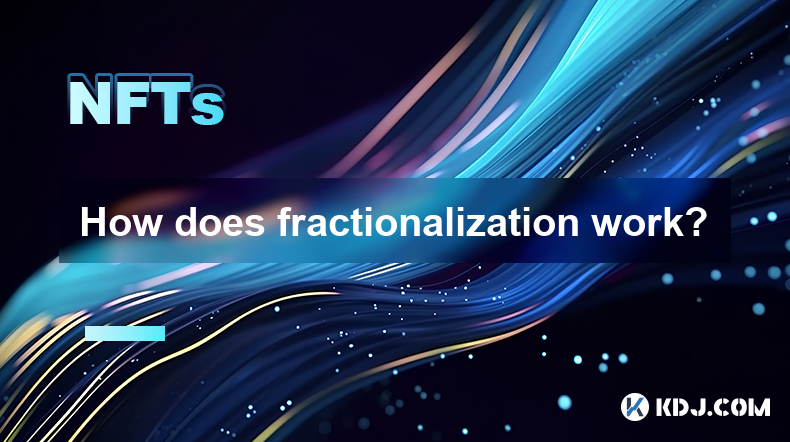
How does fractionalization work?
Fractionalization in the context of cryptocurrencies and blockchain technology refers to the process of dividing a single asset into smaller, more manageable pieces. This concept has revolutionized the way investors and users interact with high-value assets, making them more accessible and liquid. In this article, we will delve into the mechanics of fractionalization, its benefits, and how it is implemented in the crypto world.
h3: Understanding Fractionalization
Fractionalization is the process of breaking down a large asset into smaller units, known as fractions or shares. This allows multiple investors to own a piece of the asset without having to purchase it in its entirety. In the cryptocurrency space, this can apply to various types of assets, including real estate, art, and even other cryptocurrencies.
The primary goal of fractionalization is to increase the accessibility and liquidity of assets that would otherwise be out of reach for many investors. By allowing people to buy smaller portions of an asset, it opens up investment opportunities to a broader audience.
h3: How Fractionalization Works in Cryptocurrencies
In the world of cryptocurrencies, fractionalization is often achieved through the use of smart contracts on blockchain platforms like Ethereum. Here's a step-by-step look at how the process typically works:
- Tokenization: The first step in fractionalizing an asset is to convert it into a digital token. This token represents ownership of the asset and can be traded on blockchain networks.
- Smart Contract Creation: A smart contract is programmed to manage the ownership and distribution of the tokens. This contract outlines the rules for how the asset is divided and how ownership is transferred.
- Distribution: Once the smart contract is deployed, the tokens are distributed to investors. Each token represents a fraction of the underlying asset, allowing multiple investors to own a piece of it.
- Trading: The tokens can then be traded on decentralized exchanges or other platforms, providing liquidity and flexibility for investors.
h3: Benefits of Fractionalization
Fractionalization offers several key benefits to investors and the broader cryptocurrency ecosystem:
- Increased Accessibility: By allowing investors to purchase smaller portions of high-value assets, fractionalization makes investment opportunities more accessible to a wider audience.
- Enhanced Liquidity: Fractionalized assets can be traded more easily than whole assets, increasing their liquidity and making it easier for investors to buy and sell their shares.
- Diversification: Investors can diversify their portfolios by owning fractions of multiple assets, reducing risk and potentially increasing returns.
- Transparency and Security: Blockchain technology ensures that the ownership and transfer of fractionalized assets are transparent and secure, reducing the risk of fraud and errors.
h3: Examples of Fractionalization in the Crypto Space
Several projects in the cryptocurrency space have successfully implemented fractionalization. Here are a few notable examples:
- RealT: RealT is a platform that allows users to buy and sell fractions of real estate properties. By tokenizing properties on the Ethereum blockchain, RealT enables investors to own a piece of real estate without the need for large capital investments.
- Harbor: Harbor is another platform that focuses on tokenizing and fractionalizing real-world assets. It provides a suite of tools for issuers to create and manage tokenized securities, making it easier for investors to access these assets.
- NFT Fractionalization: Non-fungible tokens (NFTs) have also been fractionalized, allowing multiple investors to own a piece of unique digital assets. Platforms like Fractional.art and NIFTEX enable users to buy and sell fractions of NFTs, increasing their accessibility and liquidity.
h3: Challenges and Considerations
While fractionalization offers many benefits, there are also challenges and considerations that investors and platforms must address:
- Regulatory Compliance: Fractionalizing assets, especially real-world assets, can be subject to complex regulatory requirements. Platforms must ensure compliance with relevant laws and regulations to avoid legal issues.
- Valuation and Pricing: Determining the value of fractionalized assets can be challenging, especially for unique or illiquid assets. Accurate valuation is crucial for ensuring fair pricing and investor confidence.
- Smart Contract Risks: The use of smart contracts introduces potential risks, such as bugs or vulnerabilities that could lead to loss of funds. Thorough testing and auditing of smart contracts are essential to mitigate these risks.
- Market Volatility: The value of fractionalized assets can be subject to market volatility, which can impact investor returns. Investors should be aware of the potential for price fluctuations and manage their risk accordingly.
h3: Implementing Fractionalization: A Step-by-Step Guide
For those interested in implementing fractionalization for their own assets, here is a detailed guide on how to do so:
- Identify the Asset: Choose the asset you want to fractionalize. This could be real estate, art, or any other high-value asset.
- Tokenize the Asset: Convert the asset into a digital token using a blockchain platform like Ethereum. This involves creating a unique token that represents ownership of the asset.
- Create a Smart Contract: Develop a smart contract that outlines the rules for how the asset will be divided and how ownership will be transferred. This contract should be thoroughly tested and audited to ensure its security and functionality.
- Deploy the Smart Contract: Deploy the smart contract on the blockchain network. This makes the token available for distribution and trading.
- Distribute the Tokens: Issue the tokens to investors based on their investment. Each token represents a fraction of the underlying asset.
- List on Exchanges: List the tokens on decentralized exchanges or other trading platforms to provide liquidity and enable investors to buy and sell their shares.
- Manage and Monitor: Continuously monitor the performance of the fractionalized asset and the smart contract to ensure everything is functioning as intended. Address any issues or concerns promptly to maintain investor confidence.
Frequently Asked Questions
Q: Can fractionalization be applied to any type of asset?
A: While fractionalization can theoretically be applied to any type of asset, it is most commonly used for high-value and illiquid assets such as real estate, art, and certain cryptocurrencies. The feasibility of fractionalizing an asset depends on factors such as regulatory compliance, valuation, and the ability to tokenize the asset on a blockchain.
Q: How does fractionalization affect the value of an asset?
A: Fractionalization can impact the value of an asset in several ways. By increasing accessibility and liquidity, it can potentially increase demand and drive up the value of the asset. However, it can also lead to increased volatility, as more investors can buy and sell fractions of the asset, potentially causing price fluctuations.
Q: What are the risks associated with investing in fractionalized assets?
A: Investing in fractionalized assets comes with several risks, including market volatility, regulatory changes, and smart contract vulnerabilities. Investors should conduct thorough research and due diligence before investing in fractionalized assets and be prepared for potential price fluctuations.
Q: How can I ensure the security of my fractionalized assets?
A: To ensure the security of fractionalized assets, it is crucial to use reputable platforms and thoroughly vet the smart contracts used for tokenization. Regular audits and security checks can help identify and mitigate potential vulnerabilities. Additionally, storing tokens in secure wallets and following best practices for cryptocurrency security can further protect your investments.
Disclaimer:info@kdj.com
The information provided is not trading advice. kdj.com does not assume any responsibility for any investments made based on the information provided in this article. Cryptocurrencies are highly volatile and it is highly recommended that you invest with caution after thorough research!
If you believe that the content used on this website infringes your copyright, please contact us immediately (info@kdj.com) and we will delete it promptly.
- Eric Trump and Asher Genoot to Headline Consensus 2025
- 2025-04-17 13:15:13
- By rupam jain
- 2025-04-17 13:15:13
- DWF Labs Expands to the U.S. with a New York Office and Strategic $25M WLFI Token Purchase
- 2025-04-17 13:10:13
- Bitcoin (BTC) Supply in Profit Has Remained Above 70% So Far
- 2025-04-17 13:10:13
- Bitcoin (BTC) Supply in Profit Has Remained Above 70% So Far This Cycle
- 2025-04-17 13:05:13
- BlockDAG's 2,380% Presale Surge, $214M Raised, & 600% Golden Ticket Bonus Make It the Best Crypto to Buy in 2025
- 2025-04-17 13:05:13
Related knowledge

How to combine traditional artworks with NFTs?
Apr 17,2025 at 12:35am
The integration of traditional artworks with Non-Fungible Tokens (NFTs) represents a fascinating intersection of art and technology, offering artists and collectors new ways to engage with and monetize art. This article will explore how traditional artworks can be combined with NFTs, providing a detailed guide on the process, benefits, and consideration...

How to make music or video files into NFTs?
Apr 16,2025 at 10:29pm
Creating music or video files into Non-Fungible Tokens (NFTs) has become an increasingly popular way for artists and creators to monetize their work directly. This process involves converting your digital content into a unique token on a blockchain, which can then be bought, sold, or traded. Here’s a detailed guide on how to transform your music or vide...
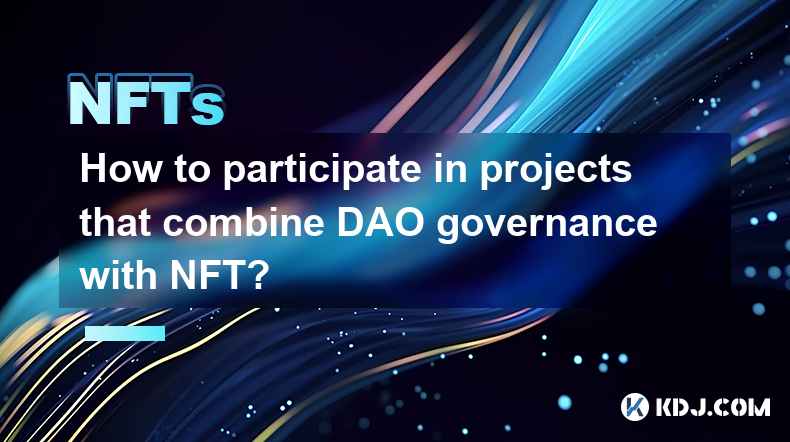
How to participate in projects that combine DAO governance with NFT?
Apr 17,2025 at 10:14am
Participating in projects that combine DAO governance with NFTs offers a unique opportunity to engage with decentralized communities and digital assets. These projects often involve voting on project decisions and owning unique digital tokens that can represent membership, access, or other benefits. Here's a detailed guide on how to participate in such ...
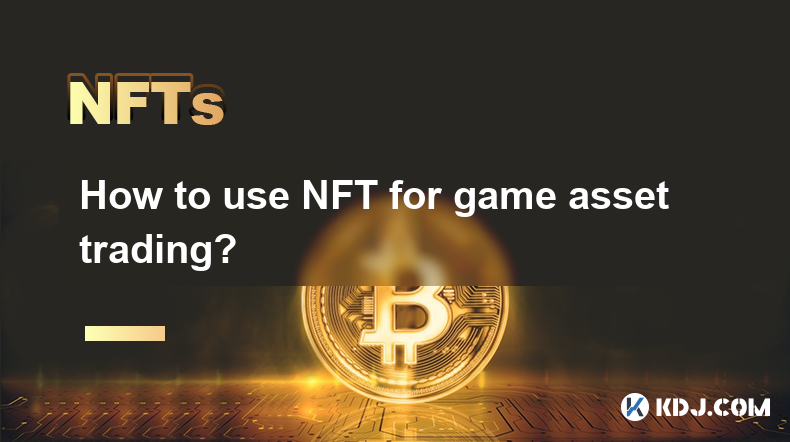
How to use NFT for game asset trading?
Apr 17,2025 at 12:21pm
Using Non-Fungible Tokens (NFTs) for game asset trading has become an increasingly popular method for gamers and developers alike to buy, sell, and trade unique in-game items. NFTs provide a way to prove ownership and authenticity of digital assets, making them perfect for trading game items that have unique characteristics and value. In this article, w...
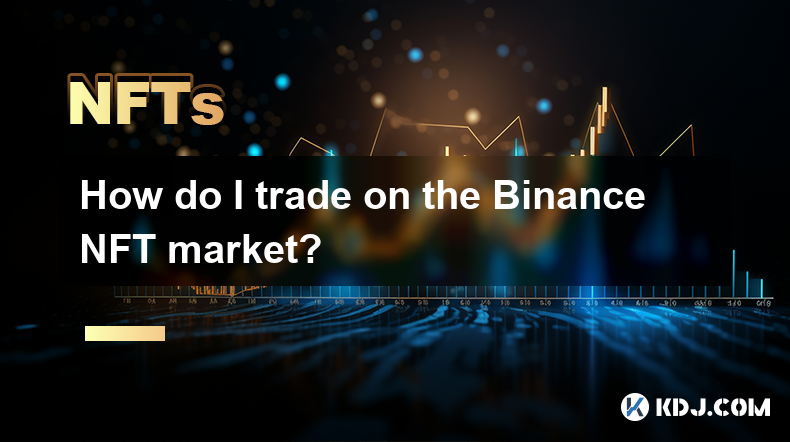
How do I trade on the Binance NFT market?
Apr 17,2025 at 03:08am
Trading on the Binance NFT market can be an exciting venture for those interested in the world of non-fungible tokens (NFTs). Binance, one of the leading cryptocurrency exchanges, offers a robust platform for buying, selling, and trading NFTs. This article will guide you through the process of trading on the Binance NFT market, covering everything from ...
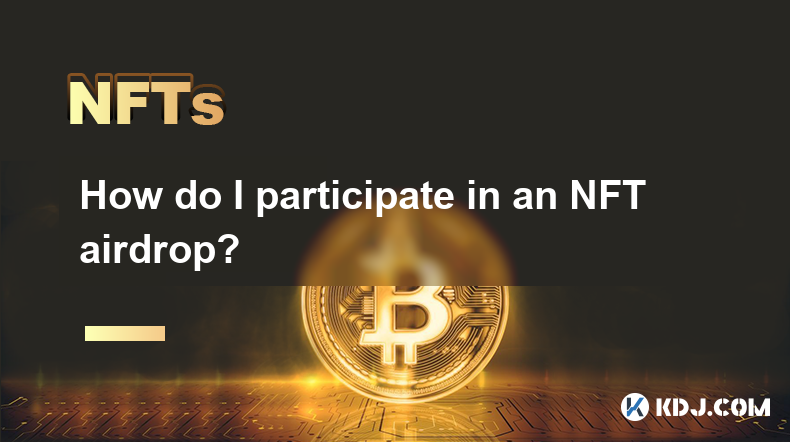
How do I participate in an NFT airdrop?
Apr 17,2025 at 02:22am
Participating in an NFT airdrop can be an exciting way to acquire unique digital assets without any direct cost. To help you navigate this process, we'll walk you through the essential steps and considerations for successfully participating in an NFT airdrop. Understanding NFT AirdropsNFT airdrops are events where a project distributes free NFTs to a sp...

How to combine traditional artworks with NFTs?
Apr 17,2025 at 12:35am
The integration of traditional artworks with Non-Fungible Tokens (NFTs) represents a fascinating intersection of art and technology, offering artists and collectors new ways to engage with and monetize art. This article will explore how traditional artworks can be combined with NFTs, providing a detailed guide on the process, benefits, and consideration...

How to make music or video files into NFTs?
Apr 16,2025 at 10:29pm
Creating music or video files into Non-Fungible Tokens (NFTs) has become an increasingly popular way for artists and creators to monetize their work directly. This process involves converting your digital content into a unique token on a blockchain, which can then be bought, sold, or traded. Here’s a detailed guide on how to transform your music or vide...

How to participate in projects that combine DAO governance with NFT?
Apr 17,2025 at 10:14am
Participating in projects that combine DAO governance with NFTs offers a unique opportunity to engage with decentralized communities and digital assets. These projects often involve voting on project decisions and owning unique digital tokens that can represent membership, access, or other benefits. Here's a detailed guide on how to participate in such ...

How to use NFT for game asset trading?
Apr 17,2025 at 12:21pm
Using Non-Fungible Tokens (NFTs) for game asset trading has become an increasingly popular method for gamers and developers alike to buy, sell, and trade unique in-game items. NFTs provide a way to prove ownership and authenticity of digital assets, making them perfect for trading game items that have unique characteristics and value. In this article, w...

How do I trade on the Binance NFT market?
Apr 17,2025 at 03:08am
Trading on the Binance NFT market can be an exciting venture for those interested in the world of non-fungible tokens (NFTs). Binance, one of the leading cryptocurrency exchanges, offers a robust platform for buying, selling, and trading NFTs. This article will guide you through the process of trading on the Binance NFT market, covering everything from ...

How do I participate in an NFT airdrop?
Apr 17,2025 at 02:22am
Participating in an NFT airdrop can be an exciting way to acquire unique digital assets without any direct cost. To help you navigate this process, we'll walk you through the essential steps and considerations for successfully participating in an NFT airdrop. Understanding NFT AirdropsNFT airdrops are events where a project distributes free NFTs to a sp...
See all articles























































































